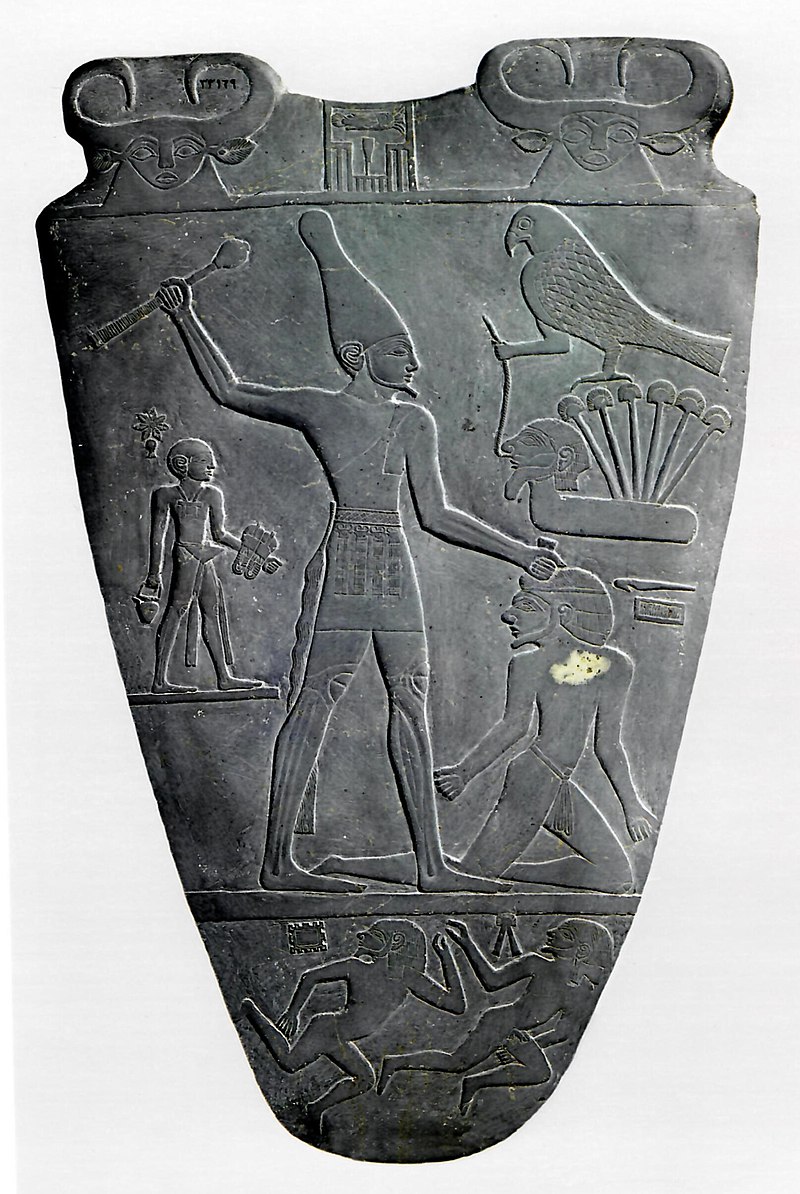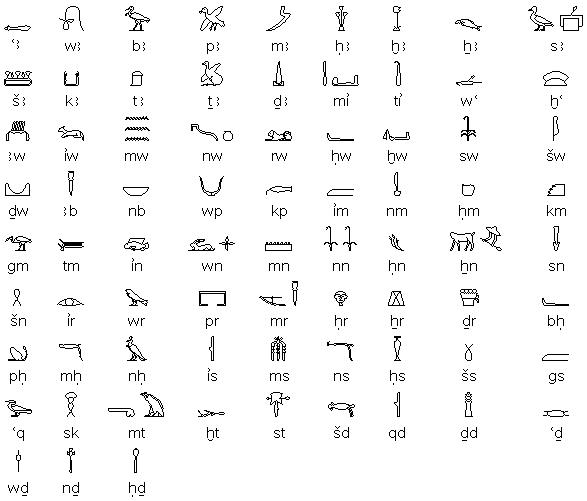@Phizzy - it's practical but interesting at the same time.
Having hieroglyphs for one consonant and having different ones for two and three consonants doesn't sound practical, but this allows for interesting decorations and works of art.
Having an alphabet is probably more practical, but probably more boring, too!
But, you do get used to it. I read my book quite a lot last year and earlier this year and I got used to it ok.
In my previous post, the bottom hieroglyphs show determinatives, these reinforce the meaning of an Egyptian word.
But, sometimes, a word featuring a two or three consonant hieroglyph will have the second and third consonants reinforced by adding the one consonant hieroglyphs for those sounds.
For example, the word for 'strong' in Egyptian is nkht - normally written as nakht. In hieroglyphs the n sound is a lengthways ripple of water (see one-consonant heiroglyphs) and the kht sound is the branch-like hieroglyph in the two-consonant group. But, to reinforce those second two sounds (kh + t) there is often added the one-consonant hieroglyph kh (the round shape with the lines running horizontally) and the one-consonant hieroglyph t (the small loaf of bread-type shape).
As well as hieroglyphics, ancient Egyptians also wrote on papyrus using a cursive style of writing, called hieratic or demotic. I don't know anything about this, but would love to find a book about it!
Written Egyptian (hieroglyphs or hieratic) is one of the world's oldest systems of writing, in fact, it might be the oldest.
Here's a slate of Narmer, the first accepted Egyptian king. He ruled Egypt nearly 5,000 years ago, so hieroglyphs are at least that old, probably older.

His name appears in hieroglyphics in the square-like palace façade at the top - his Horus name, n'r-mr, or Narmer.




